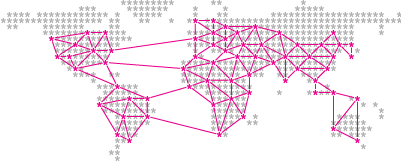Web 3 is an internet owned by users and builders orchestrated with tokens. – Chris Dixon
In continuation of my previous post on Web 3.0, we will continue to explore the landscape. These are the components and let’s explore one at a time.
-
- Web 3.0 applications – Community managed applications
- Decentralized Autonomous Organizations (DAOs) – Community owned governance
- Decentralized Finance (DeFi) – Community Finance
- Stable-coins and Central Bank Digital Currencies – Fiat collateralized and Government issue digital coins
- Creator Economy & Non Fungible Tokens (NFTs) – Community creations
- Blockchain based games – Community built, created and owned Games
Web 3.0 Applications:
During Web 1.0 era, we saw the open protocols of web itself like TCP, IP, SMTP and such. This openness enabled multiple companies build the eco system around it to make it useful to the end users. However, this changed when the world entered Web 2.0, where the companies like Google, Amazon and Microsoft built applications that are proprietary and monetized on them. The applications are highly centralized and don’t allow outsiders to make changes or enhance their applications. The companies don’t charge and mostly give the services for free, it’s not even their core offering and use the data insights to sell their products.
These will change in the Web 3.0, where the communities build and manage the applications decentralizing the services. Let’s see some examples on this is accomplished.
-
- Bitcoin – The forerunner of all cryptocurrencies that is built on decentralized network concept where the community owns the development and maintenance of the ecosystem. At this point, we are looking at it as an application but not as a cryptocurrency (we will address it as part of DeFi later) that embodies Web 3.0 concept.
- Diaspora – Application built as a decentralized social network where nodes are distributed across the world and the individual manages the contacts. (Courtesy Diaspora website). The community collectively owns the network and if one node goes down, the information is available on the other nodes providing redundancy. There is no central organization to manage and monetize. If the community decides to monetize, it would be put to vote and majority has to accept the proposal in order to be execute. Once approved, the community of developers build that enhancement and deploy it. Community users test and validate. Then the nodes are notified to accept the enhancement. The update trickles across the network. The changes are done at the consent of the users and nodes.

Compare this to the following where the nodes are completely centralized like Facebook (courtesy Diaspora website). In this scenario, the network is owned by one entity i.e., Facebook. They build and manage the network. The data is owned by them and they can decide to utilize it in whatever manner without user’s acceptance (sure it is buried in the consent agreements which no one reads). If there is an enhancement, the corporation decides and hires developers to build, hires quality and user acceptance testers to undertake the testing, then deploy it to go live. For the end users, there is no control on how their information is used or whom the contacts are shared.

The above examples are used to demonstrate the mechanizations of the Web 3.0 applications. I try hard to have a neutral opinion in disseminating the information without any judgment. However, if any of the above undermines/promotes a concept it is purely coincidental and unintentional.


